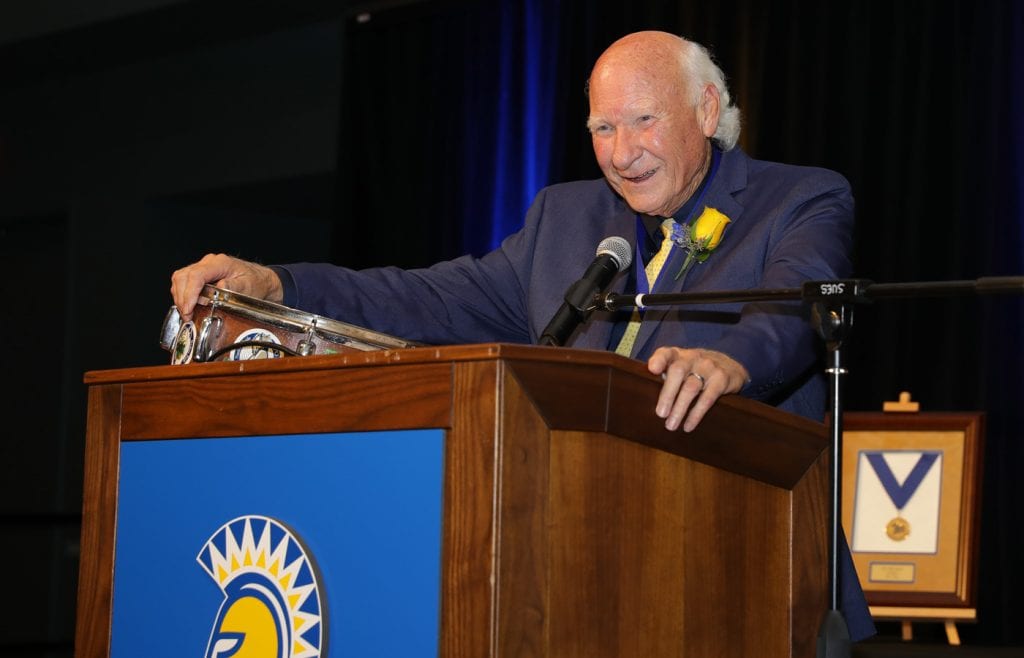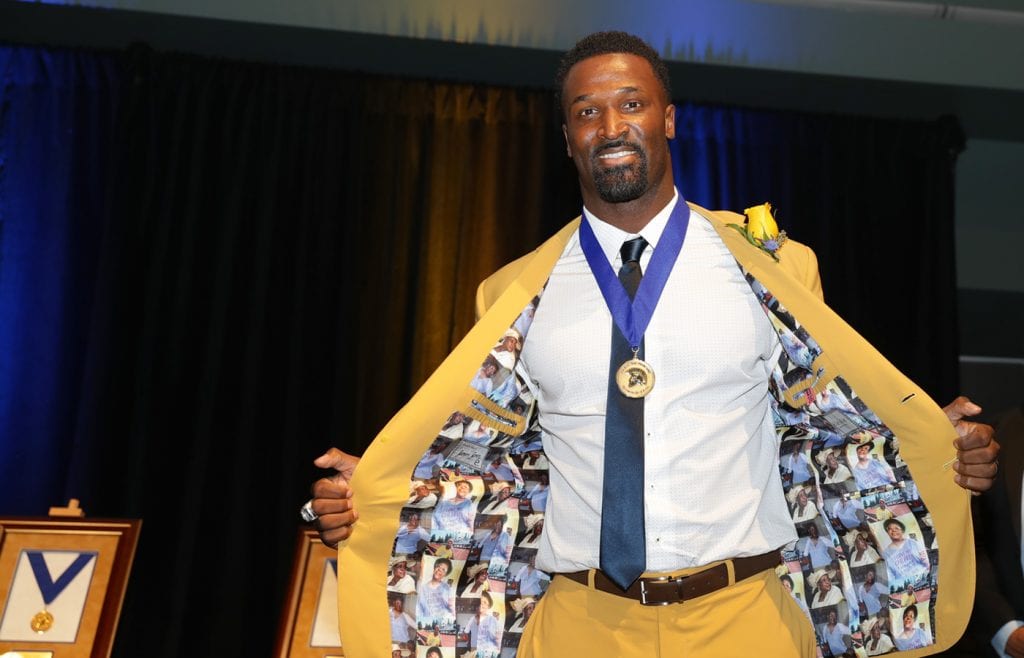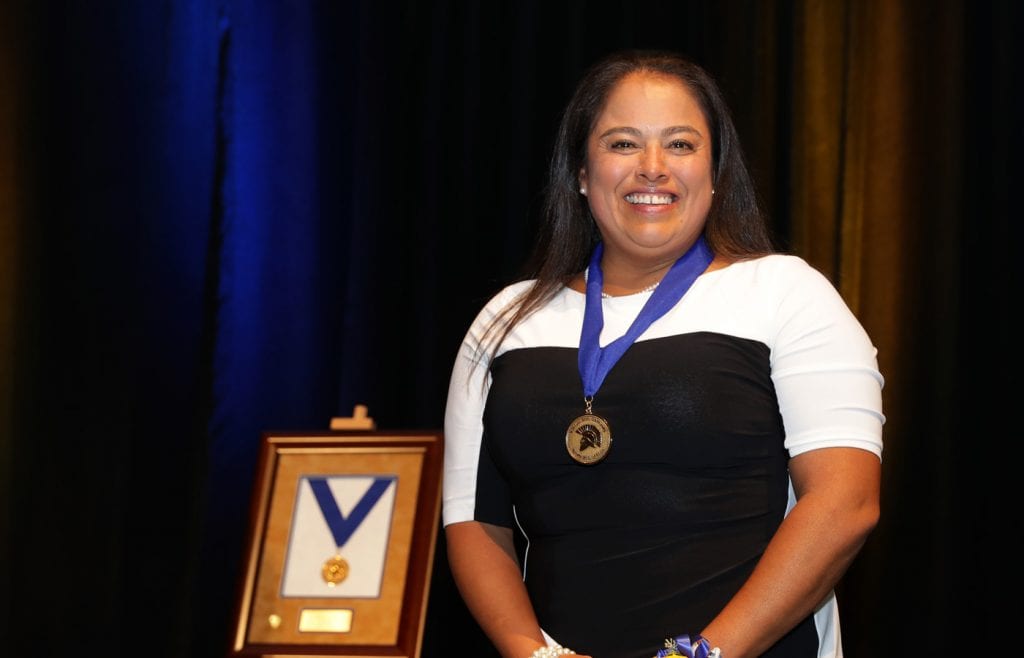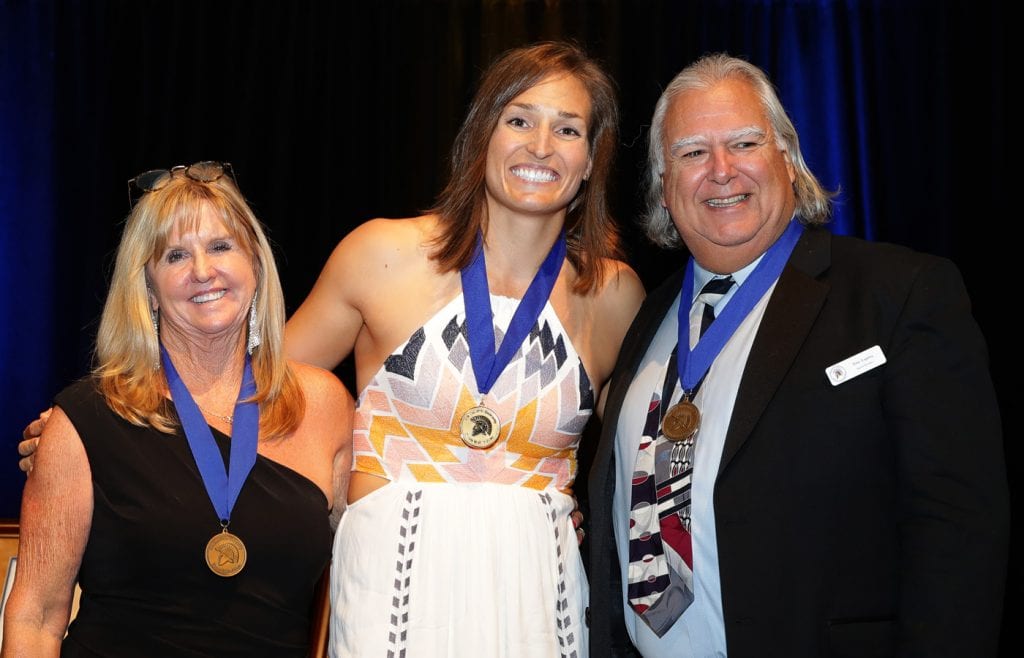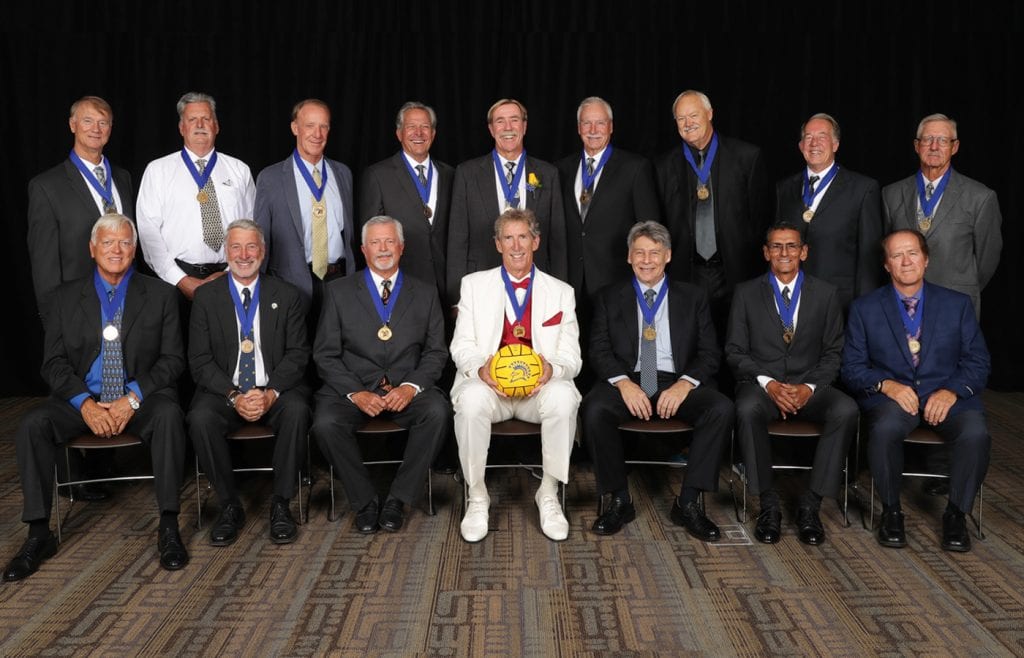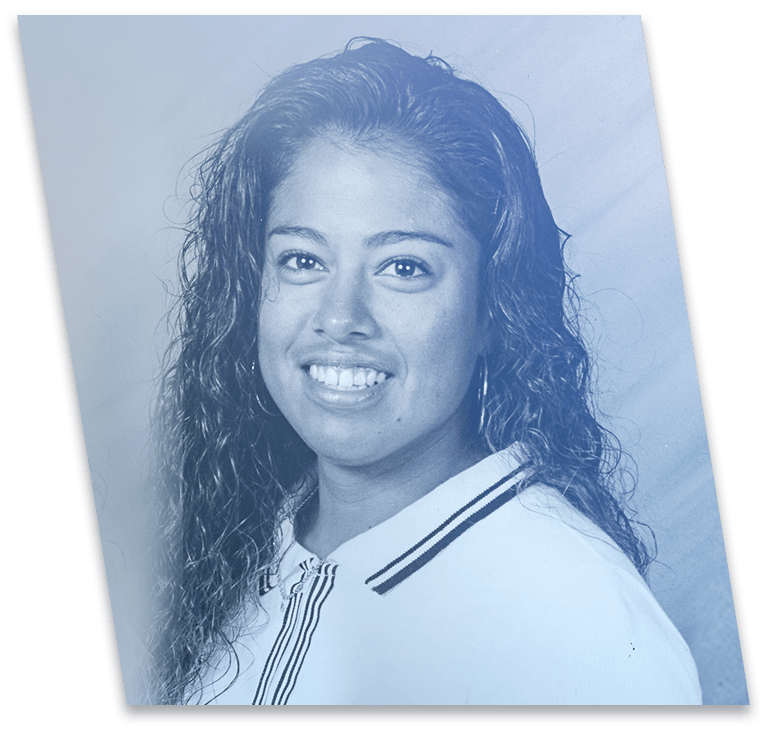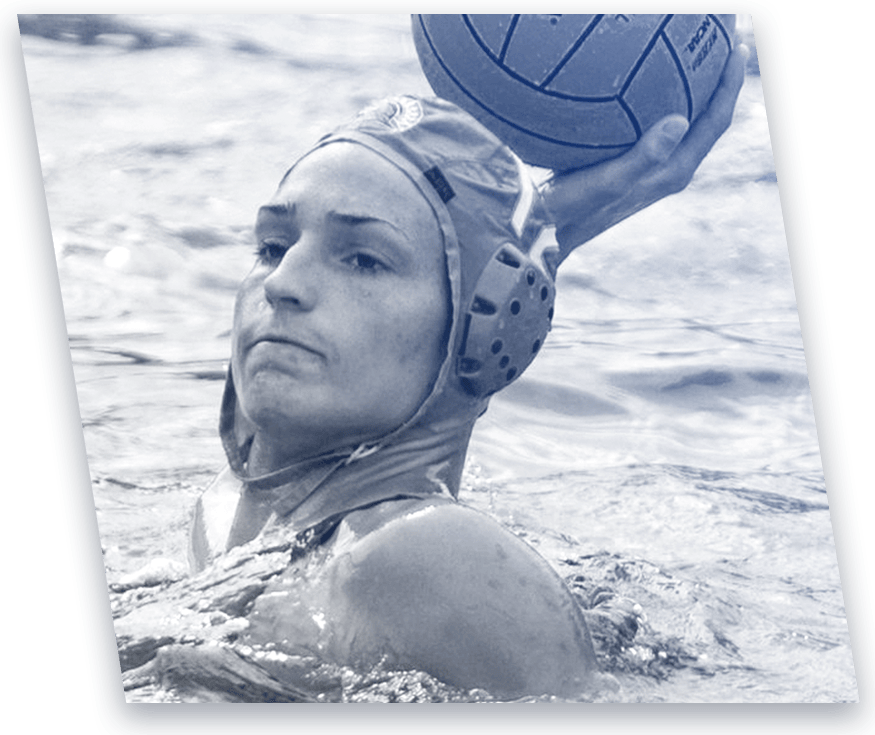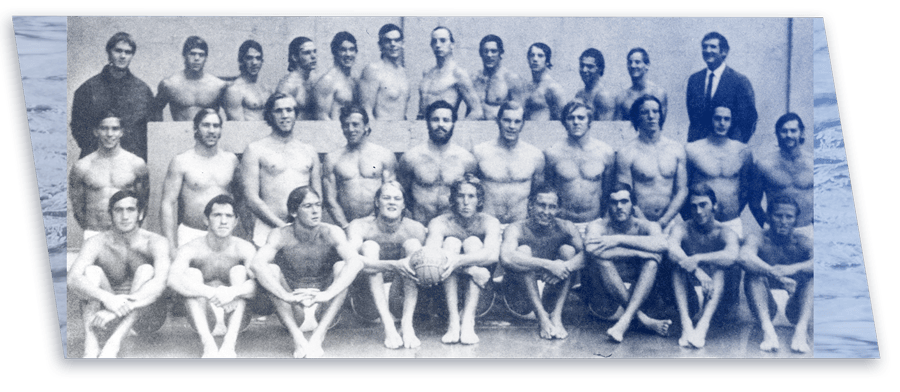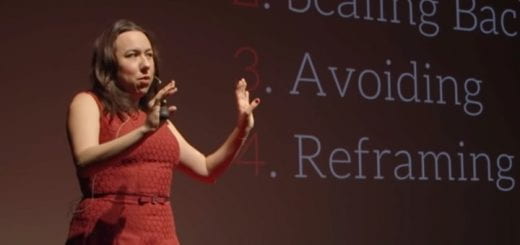Winning Spirit
What Makes a Champion?
While speed, agility, talent, fitness and drive are critical characteristics for most athletes, at San Jose State a champion possesses grit and commitment to mastering skills on the football field, the track, the green, the mat, the softball diamond, in the water, or—as is the case this year—in the stadium stands, uniting an entire university with the pride and joy of being a Spartan.
This year, San Jose State recognizes eight worthy inductees to the Sports Hall of Fame—men and women who join more than 370 of the best Spartan athletes in nearly 130 years of intercollegiate athletics competition.
Memorialized in the Jeff Garcia Hall of Champions, just north of CEFCU Stadium, home of the Spartans, SJSU Sports Hall of Famers are selected every other year by the Order of Sparta, an organization of dedicated alumni.
“What I get out of San Jose State is what San Jose State alumni and fans give to me. The feedback I get—the energy and the good feelings—make it a fairytale existence.” — George Henderson, ’70 Industrial Technology
“Krazy” George Henderson, Cheerleading
Before “Krazy” George Henderson, ’70 Industrial Technology, invented The Wave at an Oakland A’s game in 1981, before he became a professional cheerleader, rousing crowds of up to 90,000 fans, he was a judo player at San Jose State. Henderson earned his telltale nickname as the loudest character on the judo team. His energy and enthusiasm stood out in the Spartan football stands, especially once his friend Don Bogden handed him a drum, awakening Henderson’s talent. He became a high school shop teacher while cheering at games at SJSU and across the Bay, perfecting techniques to get an entire crowd on its feet. His efforts attracted professional teams across the nation, who hired him to cheer at games, and in 1975 Henderson quit teaching to cheerlead full-time. Much in the way The Wave became an international phenomenon, Henderson’s skill with crowds multiplied exponentially. He says that his signature cheer “connects all fans in one big effort to show their support, creating inter-connectivity,” a feeling that brings him back to the stands year after year. Henderson says that “it is wonderful getting the reaction from people when I tell them that I’ve been inducted to the SJSU Sports Hall of Fame. That’s what I thrive on: making people happy and seeing their happiness.”
“Charlie’s best event was the two-mile run. He had enough speed at the end that he could kick and enough endurance so he could use his kick.” — Jeff Fishback, ’64 Kinesiology
Charlie Clark, Track and Field, Cross Country
The late Charlie Clark was one of the top U.S. distance runners of his era, winning the 1960 NCAA Championship in the steeplechase with a meet record time of 9:02.1. Earlier that year, he became the first Spartan to run the steeplechase in under nine minutes with his school record of 8:58:02. Running steeplechase requires endurance, speed and an ability to “kick” an extra shot of energy into the final legs of the race. By all accounts, Clark had quite a kick. “You’ve got to be resilient enough to do the barriers as well as running the flat ground in between,” says Clark’s teammate Jeff Fishback, ’64 Kinesiology. “Charlie set a good pace but could also kick at the end.” Clark and Fishback set a world record for the two-man, 10-mile relay in 42 minutes. An accomplished cross country runner, Clark placed sixth in the 1961 NCAA Cross Country Championships, earning All-America honors the same year that SJSU finished second as a team. Ranked #3 in the U.S. in the 5,000 meters by Track & Field News, Clark competed on the U.S. national team against Russia in 1961 and 1962 and earned silver in the Pan American Games in 1964. Clark later worked as a firefighter.
“The experience, the education and the care that I received at San Jose State were second to none.” — Lisa Johnson, ’95 Psychology
Lisa Johnson, Golf
As an aspiring English golfer, Lisa Johnson (née Walton), ’95 Psychology, wrote to the American embassy in London as a teenager, inquiring how to earn a college scholarship to the United States. The embassy wrote back and two years later, she arrived at San Jose State with her golf clubs and suitcase. Johnson was eager to train with Coach Mark Gale, who set high expectations. “When you play sport at a university, you are included in a family,” she says. “Golf is so much an individual sport that to be part of a team was really refreshing.” Her performance set records, making her the first player in Big West conference history to earn medalist honors in back-to-back years (1992 and 1993)—and it was her par on the 18th hole as SJSU’s final player that clinched the Spartans’ third NCAA Women’s Golf Championships in 1992. Johnson played on the European tour before joining the Los Altos Country Club as a golf professional, where she taught golf for 10 years before starting a family. “One of my dreams is seeing my little ones play golf,” she says. It won’t be long—her kids, both under five, already have a set of plastic golf clubs.
“Everybody’s dream is not your dream. You can’t expect other people to work as hard as you are going to work for your dream.” — James Jones
James Jones, Football
Growing up, James Jones’ primary goal was to make it to the National Football League so he could provide for his family. “Whenever I stepped on the football field, all the problems I had off it—being homeless, being hungry were gone for a few hours,” says Jones, who played for the Spartans from 2003 to 2006. His game-winning touchdown in a 2006 victory over Stanford attracted NFL scouts. In 2007, he was drafted to play for the Green Bay Packers, a team that became Super Bowl champions in 2011. When the game ended, Jones dropped to his knees. “I had been homeless since I was five years old,” he says. “So many things could have gone the other way. For that season, I was the best in the world at what I do. That’s something that nobody can ever take away.” Jones played eight seasons with the Packers and one for the Oakland Raiders. Throughout his career, Jones and his wife Tamika Jones, ’06 Child Development, have given back to homeless families through their foundation, Love Jones 4 Kids. “When I meet kids in shelters, I tell them, ‘I was you. And I’m here. It can be done.'”
“College is where you really start to establish who you are as a person. San Jose State gave me the confidence I needed.” — Patricia Martinez, ’99 Sociology
Patricia Martinez, Softball
Before playing softball at San Jose State, Patricia Martinez, ’99 Sociology, says that she didn’t speak up much. A self-identified tomboy, Martinez grew up playing softball and baseball with her three brothers in San Jose. She says that she preferred her actions to speak for themselves—impressive, considering that she remains the Spartan record holder in at-bats (768), base hits (266), and shares the top spot for triples (22) 20 years later. The only Spartan to be named an All-Pacific Region honoree four times, Martinez says that softball taught her the value of “teamwork, unity and working together”—skills she draws on at Santa Clara Probation, where she has worked with at-risk youths since 1999. The first in her family to graduate from college, she encourages students to work hard, play sports and pursue an education. Whether she was communicating plays, cheering on her teammates, or juggling school and work, sport taught her to use her voice. She has a hard time imagining her life without a ball, glove, cleats and bat. Now a mother of four, Martinez tells her kids that “you may not always be the best, but it’s important to have fun and always be supportive of your teammates.”
“When you put in so much time and effort into playing a sport, that’s what makes you so proud to be affiliated with your school.”— Juliet Moss, ’09 Kinesiology
Juliet Moss, Water Polo
For Juliet Moss, ’09 Kinesiology, half the appeal of water polo is wrestling in the water. Moss discovered the sport in high school and thrived on the competition, friendship and fellowship of her team. She was recruited to San Jose State by coaches Lou Tully and Doug Robinson, role models who she says “taught me everything they could and pushed me to be the best athlete I could be. I really owe them my career as an athlete and water polo player.” A two-time All-American, Moss became the first Spartan to score more than 200 goals in her college career. As a professional player in Australia and the U.S., she trained with the best athletes in her sport—an experience that was “probably the hardest thing I’ve ever done.” Following her 2013 retirement from the U.S. national team, Moss shifted her focus to firefighting—a profession which, like athletics, draws on a team of trained individuals to serve a greater community. “For four years, I fought for the Spartans,” she says. “I wanted to find a career that would keep all the same aspects that I loved about sports—the physicality and the camaraderie. I’ve loved every second of it.
“Judo is a way of life.”— Gerardo Padilla, ’82 Business Administration
Gerardo Padilla, Judo
In 1984, judoka Gerardo Padilla, ’82 Business Administration, competed on both sides of the wall separating West and East Germany. The 1976 Pan American champion, who as a teenager had competed in the Montreal Olympics, was escorted through the wall to compete. This was just one instance where judo afforded Padilla entry into a community of competitors, compatriots and mentors. “Two major ideas in judo are the use of human energy and mutual welfare,” he says. “You have to improve yourself every day to bring something of value to this world.” The Mexico City native came to San Jose State to train with the legendary coach Yoshihiro Uchida. Padilla represented Mexico in the 1980 and 1984 Olympics and returned to the Pan American Games in 1983 before shifting his focus to business. Throughout his career as a real estate broker, Padilla has remained active in judo by serving as an assistant coach at SJSU. A sixth-degree black belt, he is committed to giving back to judo what it has offered him: expertise, friendship and essential skills. “I am proud to be a part of a winning tradition at San Jose State,” he says. “The legacy that Coach Uchida has given us all will continue.”
“It makes us proud when all the SJSU teams do well. Now that we have water polo back, we’re even more excited.” — Bruce Watson, ’76 BS, ’78 MA, Kinesiology
1971 SJSU Men’s Water Polo
In 2015, Bruce Watson returned to San Jose State to coach the newly revived men’s water polo program. A member of the 1971 Spartan water polo team, which played an undefeated 20-0 season before placing second in the NCAA championships, Watson invited his former teammates Ed Samuels, John Gebers, Lon Regher and Steve Hamann and SJSU Sports Hall of Fame coach Lee Walton to participate in a ceremony prior to the first game. Channeling the spirit of the 1971 team, each alumnus handed a cap to an incoming player, and Walton handed a clipboard to Watson, ringing in a new era of Spartan men’s water polo. The 1971 team was comprised of junior college transfers, walk-ons and four-year players who rallied around Walton, whose tough practices demanded focus, grit and commitment. Though their individual accomplishments are impressive, the team’s true impact reflects how many players have given back to the sport. “It is very important to have men’s water polo back at San Jose State because it has turned out a lot of coaches and officials for the sport,” says Watson, who played with Team U.S.A. before coaching at West Valley College for 25 years. “Seeing the success we had then and knowing that we can do it again makes me proud.”
Mike Albright; Tom Ballard; Fred Belcher, ’73 Business Administration; Ken Belli; Roy Bobbins; Mickey Butler; Ron Coates; Jeff Eorio, ’72 Political Science, ’77 MA Physical Education; Pat Ellington; John Gebers; Chris Gibson; Jamie Gonzales; Steve Hamann; Dennis Hartman; Chris Holt; Brad Jackson; Dan Jones, ’73 Speech Communication; Wayne Matheson; Dale Mitchell; Scott Mobley, ’75 Chemistry; Dave Pallacio; Lon Regher; Ed Samuels, ’74 Political Science; Steve Spencer, ’66 Real Estate; Dan Thompson, ’75 Biological Science; Ben Van Dyke, ’73 Political Science; Bruce Watson, ’76 BS, ’78 MA, Kinesiology; Roger Williams; Dave Winchell; Craig Windmuller; Mike Wade, ’76 Communication Studies, Single Subject Teaching Credential; Ron Young; and Harold Zane, ’74 Kinesiology. Coached by Lee Walton, ’57 BA, ’62 MA, Physical Education, and Mike Monsees.


